Korean lens maker Samyang is the lens equivalent of another Korean brand – Kia/Hyundai. Though being a relative newcomer compared to the established Japanese and German giants, Samyang has managed to cause quite a stir in the lens community…just as Kia and Hyundai have managed to carve out a similar niche in the automotive world. The Korean plan for success has been consistent across these brands – offer more for less. Kias and Hyundais typically come better equipped than their competitors, and Samyangs (which are also sold under the brands Rokinon, Walimex, Bower, and even Vivitar) have come with optics that compete with (and even exceed) lenses that are far more expensive.
Such is the case with the Rokinon 12mm f/2 NCS lens that I am currently reviewing. I am very familiar with its big brother, the Rokinon 14mm f/2.8 lens for full frame bodies. That lens is so competent that it made my Canon “L” series wide angle zoom expendable. Some of my most dynamic photos have been taken with the Rokinon 14mm, and I just love its incredible sharpness and color rendering. My experience made me really anticipate the chance to review the “little brother” we are considering here.
The 12mm f/2 is designed specifically for mirrorless cameras and is sold in a variety of native mounts for Micro 4/3rds, Sony E-Mount, Fuji X Mount, Samsung NX Mount, and the Canon EF-M Mount that I am using for review. The mirrorless segment has seen massive growth around the world, and even the North American market is seeing a rapidly growing segment. A lot of photographers are intrigued by the idea of getting high quality images from compact systems. I really like my EOS M body (despite its shortcomings), and the fact that Canon has been so slow to develop lenses for the system (only 4 so far) has made me more excited to see development for the mount from other manufacturers like Samyang. While I am reviewing on the EF-M mount, my observations for the lens should be similarly applicable across the other systems that the lens has native mounts for.
One thing that will change across the different systems is the apparent focal length of the lens due to the differing crop factors of the various sensors. On the Samsung NX Mount or Sony E-Mount, the lens will have a 35mm equivalent of 18mm (1.5x crop), while the EF-M mount (1.6x crop) has an equivalent has 19.2mm. The Micro 4/3rds sensors have a 2x crop factor, so this lens has an equivalent angle of view to a 24mm lens on a full frame sensor. All of these land square in the middle of prime wide angle shooting territory, although Samsung and Sony users get the most appealing angle of view here. I have found this focal length to be very appealing on my EOS M, and it affords some excellent framing options with its 98.9 degree angle of view.
Build Quality and Design
This is a beautifully designed little lens. It is very compact at only 2.33″ long (59.1mm) with a diameter of 2.85 inches (72.5mm). It weighs only 8.64 oz (245g). The design is particularly attractive, with a quality, dense feel. The body is the typical mix of metal and engineered plastics, but it has a very handsome finish. The aperture ring moves nicely and has well defined clicks for each half step (full stops are labelled on the ring). There is a “de-clicked” version sold specifically for cine work with a slightly narrower maximum aperture (f/2.2). This is a purely manual lens, and both aperture and focus are controlled manually.
The focus ring is pretty much perfect, beautifully damped and smooth, with hard stops at both the macro and infinity ends, although (as is unfortunately common with Samyang/Rokinon products) infinity focus actually comes slightly before the hard stop. The ribbed focus ring reminds me a lot of a Zeiss product (and that’s a good thing!) EOS M lenses with AF only employ a “focus by wire” system when you do have to manually focus, and I personally really dislike the disconnected feeling from focus, not to mention the lag (this is also present in Canon’s other STM lenses). There is a slim red ring (aluminium?) that adds a decorative flare that seems oddly reminiscent of Canon’s L series lenses…except this application actually seems a little classier. There is a white dot on the ring that serves the dual purpose of showing which aperture has been selected and also serves as the distance marker for the focal ring above. The final half inch of the barrels tapers out significantly to accommodate the quite large front element. The included petal shaped hood clicks nicely (and definitely) into place to provide both shading and protection for that element. Speaking of that front element, while it is bulbous like the 14mm I own, this lens design allows for the use of traditional filters on the 67mm filter thread (which, incidentally, is larger than any of the other lenses that I have used or tested for the EF-M mount). The ability to use traditional filters (and even stack a few of them without vignetting) is a huge advantage over its big brother. It makes it much easier to shoot long exposures, for example (I am using an ND64 6 stop filter midday for this shot):
Other features include a special nano coating (NCS) to reduce flare along with the use of 3 ED and 2 aspherical elements to reduce distortion and chromatic aberrations. The design is 12 elements in 10 groups. The lens has a metal bayonet mount. But the biggest deal here is the f/2 aperture, which is wider than any of its competitors. Samyang has accomplished something significant by combining this large aperture with great sharpness wide open.
No weathersealing is claimed (but since the body is not weathersealed, this will probably not be a component of any EF-M lens). I personally would not be concerned about using the lens in moderate weather conditions because it doesn’t have any electronics and all of the focus is done internally. The lens should be resistant to getting dust inside and a little rain is unlikely to hurt it much.
Manual Everything
The lens looks great on my EOS M, and I really, really like the construction of the lens. It feels like a premium product, although its price is modest ($399 at B&H). The balance is great, and the lens is easy to use. Let me qualify that last statement by saying that I have a lot of familiarity with manual focus lenses and, more specifically, with the use of the 14mm on my full frame bodies. Manual focus seems intimidating to many photographers unaccustomed to their use, but the truth is that most photographers will quickly become familiar with where focus needs to be for specific situations and will be able to prefocus. For example, when shooting landscapes, the wide angle of view means that infinity focus comes fairly early when shooting at narrower apertures (even beginning at f/4).
For example, if you set an aperture of f/4 and focus at about 7 feet out, everything from 3 feet to infinity will be in focus. If you understand that, then prefocusing the lens is a cinch. Unless you specifically want something much closer to the lens in focus and to use a wide aperture you won’t have to think about focus very much. When you do need to focus, the ability to quickly magnify the image by 5x or 10x takes the guesswork out of focusing. Other camera systems have even better focus aids for manual focus, including focus peaking. There is a bit of a learning curve for using manual focus lenses, but lenses like this are amongst the easiest to use.
You can focus on very close subjects, as minimum focus is 7.87″ (20cm). That, combined with the wide aperture of the lens (f/2), means that you can actually create some unique close focus images that include both context and some surprisingly decent bokeh.
Image Quality
But here’s what matters the most: the image quality is excellent even at the widest aperture. The lens is very usable wide open, and stopped down a bit is incredibly sharp across the frame. The 14mm is also incredibly sharp across the frame, but that lens has such extreme distortion along the edges that some of that sharpness is lost. That isn’t the case with the 12mm, as distortion is actually nicely controlled and easily correctable in post (using about a +7 on the distortion slider in Lightroom or ACR seems to do the trick). There doesn’t seem to be a standard profile for the lens in Lightroom or ACR yet. The brick wall test shows that this degree of distortion is not really going to be a big issue in field work and can be corrected quite well.
The lens produces very sharp images across the frame. One will never need to go narrower than f/5.6 for sharpness (although there are other reasons to choose a narrower aperture.) It also has great color rendition. I am currently also reviewing the superlative new Canon EF 16-35mm f/4L IS USM lens, and this lens holds its own nicely. In fact, the only thing holding this lens back is the limitations of crop sensors.
There are certainly some shortcomings along with all of this goodness. There is no electronic coupling to the camera body, so no EXIF data is reported. You won’t have to guess at the focal length (that isn’t going to change), but aperture is not reported, so if you are sharing your work (and this matters to you) you will either have to record your aperture separately or guess at it! Camera body specific information like shutter speed and ISO will be recorded as per usual. I also find that while the lens visually meters properly on the screen in AV/TV/P modes, Manual mode does not. Images appear underexposed on the screen until capture, and metering is not completely accurate. As someone who frequently shoots in Manual mode, this is a significant issue. Of less concern to me is the fact that the lens (unsurprisingly) has a fair amount of vignetting (even when stopped down a few stops). Vignetting is so easily fixed in post in either Lightroom or Photoshop’s ACR. This wide open shot shows the vignetting.
One other minor niggle I noticed is that the sunstars produced by this lens are somewhat boring (much like the 14mm). I am reviewing the new Canon 16-35mm f/4L IS, and I certainly preferred the sunstars produced by it.
Competitors
The single greatest challenge to this lens in a Canon mount is that Canon offers a very competent 11-22mm f/4-5.6 IS lens in an EF-M mount. That lens also has excellent sharpness and color rendition plus adds autofocus and a three stop image stabilizer. It’s price? Also $399, although US shoppers will need to buy from another market (like from Henry’s in Canada) as (for some crazy reason) Canon USA has chosen to not distribute the lens. Even retail giant B&H does not carry it. The Rokinon does have the significant advantage of the f/2 aperture, which is a full two stop advantage over the Canon zoom at its widest. I find there is a lot of creative applications for that wide aperture, and I also find that the ability to shoot at f/2 or f/2.8 with great image quality helps to overcome some of the shortcomings of crop sensors (namely the increased noise at higher ISOs). Still, I recognize that I am more comfortable with manual focus lenses than the average photographer, and the appeal of the Canon’s AF (not to mention image stabilizer) at the same price point removes one of Samyang/Rokinon’s typical advantages. The Canon lens is even more compact (220g and only 58.2cm in length when fully retracted). This is a judgment call for potential buyers, although truthfully the Rokinon will sell more copies on probably all of the other mounts than the relatively unsupported EF-M mount. If you are using one of the other systems, you will have to make that judgment call as compared with other options. I would actually personally lean towards this lens because of the wide aperture, which is (to me) more useful than the zoom range and AF on the Canon.
I have to admit that I fell in love with this little lens. I have a serious soft spot for my other Rokinon, and this lens is really much like a miniature version of it. I love the look of the lens and the look of the photos it produces. It is a great match for the EF-M 22mm f/2 STM (another amazingly good little lens optically), and the combination literally fit in my pocket (with some bulging!) when I went out shooting one evening carrying a DSLR setup as well.
The Samyang/Rokinon 14mm f/2.8’s biggest claim to fame is its excellence as an Astra-photography lens. I love shooting “nightscapes” with it because coma is so well controlled that star points are very crisp and precise. Fortunately this lens is no different. It shines when the lights go out. I had a bit of a challenge getting a clear night sky during the time of the review, but I was able to get enough of a look at the night sky to realize that this lens does fabulous work even wide open. Coma is really well controlled, so stars have that crisp, precise look much like the bigger Rokinon. The ability to shoot at f/2 on a shot like this enables me to bypass the more limited nature of the APS-C filter and keep the ISO low (1600) where images are still nice and clean.
More Strengths
The truth of the matter is that this little lens is in most ways a better, more complete version of the big brother 14mm f/2.8. It has far less distortion (which means that the extreme corners are useful), similar sharpness, and (this is a biggie) can use traditional filters in a common (and relatively inexpensive) size. The Achille’s heel of the lens is really the nature of the crop sensor. As of this point, the EOS M’s sensor cannot compete with the superior full frame sensors in my 6D bodies when it comes to high ISO performance, pulling information from the shadows without banding, resolution, and a somewhat more nuanced handling of color information (this last point is hard to quantify, but is a noticeable difference between full frame and crop sensors).
But one place where the 14mm wins is angle of view. 14mm on a full frame sensor is very wide; one would require a crop sensor lens of between 8-9mm to get a similar angle of view. Part of what makes the 14mm lens so compelling is that incredible angle of view that produces such dramatic results. It is that extreme focal length that also produces the aforementioned shortcomings. The choice to create a lens with a slightly less dramatic angle of view allowed Rokinon to also build a lens that has fewer shortcomings. And this angle of view is still a very, very compelling one that will hit the sweet spot for many landscape shooters.
That f/2 aperture is no gimmick, either. I found it very useful, both for shooting narrow DOF shots and for compensating for dim shooting conditions. By the way, when shooting shots that are near to the minimum focus range the lens will produce surprisingly good bokeh, both in the nature of the highlights (nicely round and soft) but also in a nice transition from focus to defocus. It can produce very interesting images with a nicely pronounced focal subject but within a wider context than lenses with a longer focal length. This image of a fall leaf in the foreground with the colors of autumn in the bokeh region is a good example of how using this lens wide open can help you to do storytelling images. It is more than a landscape lens.
The relatively low distortion also means that one can use this lens for architectural work, though it will not replace a good tilt-shift lens for commercial work. Still, for the most part lines remain strait, and this series from Boldt Castle in the 1000 Islands region show how this makes a pretty compelling little option for interior/architectural work.
One other plus to this unique combination of light weight, small size, and large aperture is that I have already begun to use this lens in my wedding/event work. It is easy to add it to a harness type system and not even notice the additional weight. During events I have pulled it out at times to help tell the story from a wide perspective while using a DSLR/telephoto combination to focus on the details. The fact that I can prefocus the lens to have everything in focus means that I can just pull it out and quickly snap a shot of the action from a very different perspective. This is a pretty big deal, as I typically shoot events using 24-70mm and 70-200mm f/2.8 zooms. The perspective from this lens is noticeably wider than 24mm, and it means I have one more (and a more dramatic) perspective to add to my repertoire without adding a lot of bulk and weight.
Summation and Video Review
In summation, this lens is (at least to me) one of the most exciting options available in the EF-M mount. It is a lens well situated for producing some “WOW” pictures from this compact system (along with the other camera systems that it is produced for). It has a very nice build quality, well-functioning manual controls, and has exceptional image quality even wide open. It’s a great focal length, has great color rendition, and is a lot of fun to use. It’s greatest challenge is that Canon makes a great compact wide angle zoom that has AF, IS, and costs no more. But it’s greatest asset is a fully usable f/2 aperture that is 2+ stops faster than the Canon zoom. That made the difference for me; I added this lens to my own kit at the end of the review period. It really boils down to your own personal priorities. The good news: I don’t think you can really make a bad choice here. Just be prepared to do your own focusing if you choose the Rokinon.
Pros:
• Has an f/2 aperture.
• Is sharp wide open and only gets better from there.
• Corners are completely usable
• Has great build quality
• Nicely compact – a great match for a small mirrorless body
• Great color rendition
• Nicely weighted manual focus ring and aperture ring
• Great angle of view
• Low distortion for a wide angle lens
Cons:
• Manual everything
• No EXIF data reporting
• Good but not great price compared to competition
• Manual mode metering isn’t accurate
• Infinity focus arrives before the hard stop
• Boring sunstars.
• Vignetting
To view many more samples (including full size images), visit the Image Gallery here:
Gear Used:
Canon EOS-M Mirrorless Digital Camera
Rokinon 12mm f/2 NCS lens
Adobe Photoshop Lightroom 5 Software for Mac and Windows (Boxed Version)
Adobe Photoshop Creative Cloud 1-Year Subscription
Alien Skin Exposure 6
Purchasing your gear through B&H and these links helps fund this website and keeps the articles coming. Thank you for your support.
Great News! I can now offer a 5% discount on all purchases at Amplis Foto, Canada’s Leading Photographic Supplier. Please enter discount code: AMPLIS52014 in your cart. It is good for everything in your cart, and is stackable with other coupons, too! It will take 5% off your entire order! Proceeds go towards keeping this site going and providing you with new reviews!
Error: Contact form not found.



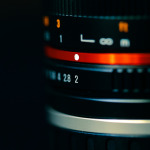
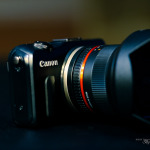
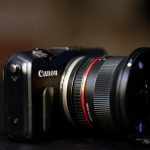
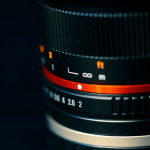

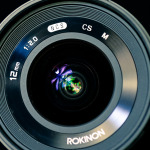
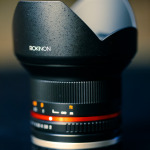











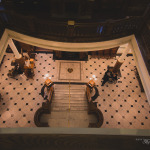
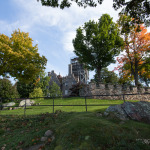
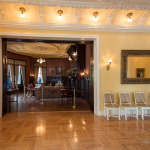


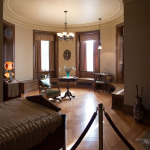



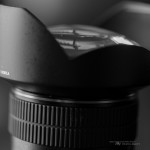

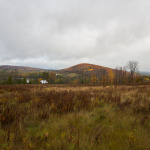
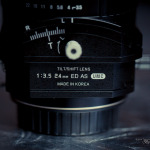

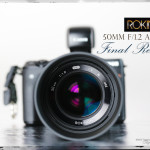
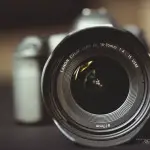


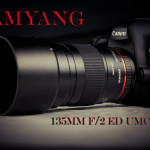
Excellent review and beautiful images!
May I suggest a review of the Rokinon 8mm f/2.8 UMC Fisheye II (EOS M mount) next?
I’ll take a look at it at some point. I’ve got a full plate of reviews at the moment. Unfortunately the target audience for EOS M reviews is on the smallish side!
Very nice review Dustin. Really unbiased. This review is spot on. Even down to the boring sunstars. Even stopped down to F16, I have been forced to enhance Sunstars in post. I don't no to many reviews that get that detailed. I will certainly refer people to this page. Gary (WestOkid).
See you on Flickr!
Thanks, Gary. It’s a great little lens. I would appreciate the referrals as I continue to build my “brand”
I had already decided on this lens for my EOS M. Thanks for the thorough and detailed review. You've taken some lovely images here and it's inspiring.
cheers!
j
0=0
I think you’ll be happy!
Hello Dustin,
Thanks for this complete review.
I'm on the fence to buy this lens but I wonder if it can uses "85mm type" filter(s) holder without vignetting (from Lee or Hitech).
It seems you're using only Ø67mm circular filters with this lens… But maybe you have an idea?
Have a good day.
Harold, I have successfully used filters from a the Cokin P system, which I think are about that size. No vignetting issues. The lens thread actually flares out quite a bit wider than what the front element is, so I’ve yet to encounter a vignetting issue with any filter combination so far.
Hi, I recently picked up the 12mm rokinon and the a6000. Your review of this lens was what led me to pick it up from Amazon. Since I am a beginner when it comes to photography, can you tell me exactly how to you set up the lens according to "For example, if you set an aperture of f/4 and focus at about 7 feet out, everything from 3 feet to infinity will be in focus.". I would like to know where exactly on the lens would you achieve that focus. Thank You.
I don’t have a copy with me right now, but somewhere right around the 2 meter mark on the distance scale should be right. The distance scale is fairly accurate on the lens from my experience.
I wonder how much the image circle extends beyond APS-C while having the hood off. I'm specifically thinking about using the Sony E mount version on a Sony FE camera.
That may be possible with a Sony, perhaps, but the mounts don’t work that way in a Canon infrastructure.
Hi, just download “Simple Dof calculator” on the Mac App store.
Oups, misplaced my reply ; this is supposed to answer Kel’s question.
Thanks for a wonderful and helpful review.
I bought the Samyang 12mm f/2 lens a few months ago for my Fujji XT1 and I can confirm that it is an exceptionally good lens at a great price.
Cool review bro
Thank you, Adhika